|
|
|
Introduction
Buckie was the most northern lamp factory in the United Kingdom, originally founded to bring employment to the Scottish Highlands. At first it focussed on making small lamps so as to combat the costs of transporting raw materials and finished products across the length of the country, but such was the success of the operation that it ultimately ended up making the majority of the small-volume special incandescent lamps required by its owners, BTH and then Thorn Lighting. By the mid 1980s however, labour costs were rising in Scotland and with this on top of the transportation costs it became less and less viable. Buckie finally closed in 1987 with production being transferred to Preston and Merthyr. |
 Buckie Lampworks in 1977, after completion of the final extension
Buckie Lampworks in 1977, after completion of the final extension
|
| Address |
Marchmont Crescent, Buckie, Banffshire, Scotland. |
| Location |
57.6796°N, -2.9484°E
|
| Opened |
1956 |
| Closed |
1987 |
| Products |
Carbon Heater, Squirrel Cage, GLS High Watts, GLS Low Voltage, GLS Rough Service, Daylight Blue, Fireglow Amber, Large Candle, Pygmy / Sign, Pilot / Indicator, Single Ended Tubular, Double Ended Striplight, Low Voltage Reflectors, Infra-Red Reflector, Auto Headlamp, Bus Lighting, Railway Signal, Traffic Signal, Airfield, Photoflood, Microprojector, Sound Exciter, High Wattage Projection, Aldis / Morse Signal, Lighthouse, Special military lamps. |
Factory Origins
The idea of locating a lamp factory in the Scottish Highlands was first planted during a chance encounter between two giants of the British electrical industry, who happened to be seated next to each other during a small dinner party in London during the early 1950s. The men were Captain Oliver Lyttelton (later The Right Honorable 1st Viscount Chandos KG PC DSO MC), head of the vast British Thomson-Houston Company (BTH), and the Right Honorable Thomas Johnston, Chairman of the North of Scotland Hydro-Electric Board. When hearing of BTH's difficulties of finding sufficient labour to man its multitude of factories concentrated in the South-East and Midlands, Johnston lobbied hard on the idea of decentralising manufacturing towards Scotland where there was a copious reservoir of workers keen to enter employment. There can be little doubt that Chandos listened with interest that evening, because contact was swiftly established with Scottish Industrial Estates Ltd., who played a key role in determining the location of the new factory and ensuring its birth. When BTH learned of the generous government grants available for relocating industry to Scotland, and satisfied itself that the slightly lower wages in the North could compensate for the additional costs of transportation to and from this far-flung location, the deal was done and life in Buckie was to change for ever.
Buckie at the time was a small fishing town, and there was little opportunity for employment beyond that industry. Traditionally the men had gone to sea, while the women remained on land and manned the gutting operations for food preparation. Following the war and the loss of the Herring markets, that industry had been declining and Buckie presented a site with a high concentration of female labour - an essential basic requirement of every lamp factory. Thanks to their nimble fingers and close attention to detail, armies of women have proven themselves throughout the world as being particularly efficient in building the detailed internal assemblies of electric lamps.
The type of product to be made at Buckie had to be chosen with care, to ensure that transportation costs would not jeopardise the success of the operation. After some consideration, BTH decided to trial the Scottish site by relocating the manufacture of Telephone Indicators from its Royal Ediswan division at Ponders End. That was a lamp whose raw materials as well as the dimensions of the finished product were small, allowing great quantities to be transported the length of the country with minimal cost impact. Meanwhile the telephone industry was booming, and vast quantities of miniature incandescent lamps were required to equip every one of the numerous telephone exchanges that were springing up around the country. Manufacturing had expanded to the level that ten thousand square feet of floorspace was deemed necessary to cope with demand at the new factory - and following good negotiations with the local government, BTH agreed from the outset to double the size of the first build to 20,000 sq.ft. to allow room for future expansion.
The factory build was undertaken in 1955 by Scottish Industrial Estates Ltd., selecting a site on Marchmont Road beside the railway line to Keith. Steelwork for the two huge sheds was provided by Hamilton Bros. of Buckie, with many other local firms being called upon for each specific aspect of the construction. The project was overseen by Trevor Humphery of Ponders End and Ben Paterson the BTH Leicester factory, which had in the mean time become the headquarters of the company's Lamp & Lighting division. During an early visit to Buckie they hired five young girls who were sent down South to Ponders End, where they were to spend two months learning how to make the selected telephone indicators such that after their return they could train up other local girls in the art and science of electric lampmaking. |
Start of Operations
By 19th June 1956 the factory was almost ready, and the official opening was held. Lord Chandos was the first on his feet and reassured the people of Buckie that that factory was there to stay, prosper and expand at the appropriate moment, thus providing more work for the unemployed in the town, and that every effort would be made by BTH to persuade other large-scale industrial companies to set up factories for suitable products if not in Buckie, elsewhere in the Scottish Highlands.
The Bulb Factory as it soon became known, was a shining example and competed superbly with its sister factories in the Midlands and South-East. New workers were hired every few weeks to meet growing demand as production ramped up, and great satisfaction must have arrived when it was proven to be a financial success. Other types of lamps were quickly identified for relocation, with double-capped striplight types being the next to transfer from Ponders End in early 1958.
By this time it was clear that the balance between increased transportation costs and more competitive labour rates was particularly favourable, and BTH undertook the ambitious decision to establish manufacture of considerably larger lamps in Buckie. Four years earlier the company had taken over the operations of Siemens Electric Lamps & Supplies Ltd., including the factory at Strand Road, Preston, and it was decided that the labour intensive manufacturing of Rough Service incandescent lamps was no longer cost-effective at that site. The lower wages of Buckie must have presented a particularly attractive solution, because it was decided to transfer that entire manufacturing unit. The success of manufacturing such physically large lamps must have then proven beyond all doubt that Lord Chandos had been right to take his gamble on Scottish manuacturing, and the coming years saw a plethora of other lamp types making the northward journey - all with one common thread, in that the high degree of human labour required in their construction tipped the balance in favour of the low-wage site in Buckie. |
Transition to Thorn and Further Growth
1962 saw the first major building extension. The larger size of the new lamps being made at Buckie called for more space to be devoted to stores of raw materials, and a dedicated warehouse area was built at the end of each of the two main production bays. A third store was also built in readiness for the second extension, in which a whole third manufacturing bay was erected during the period 1966-68. That then became the dedicated raw materials warehouse, leaving the rest of the site free for manufacturing.
During the second half of the 1960s Associated Electrical Industries, the successor of BTH, passed through a period of particularly poor management and control of its lamp and lighting business was gradually lost to Thorn Lighting - first on 31st December 1964 when Thorn's subsidiary British Lighting Industries acquired a 65% stake in AEI Lamp & Lighting, and finally on 20th October 1967 when Thorn acquired the balance. AEI had never properly integrated all of its various lighting subsidiaries and factories, and there was significant duplication of work at different sites within the group. Thorn was swift to re-organise the business and wasted no time in shutting down the less effective operations.
Buckie clearly survived the new company's detailed audits, and was to benefit considerably in the following years with more and more production being sent north. Bus and Railway lamps arrived in 1966, and following the closure of lampmaking at Ponders End in 1966-67, the majority of that factory's production was relocated to Buckie, including special projection lamps such as Microprojectors and Sound Exciters. Meanwhile Leicester had in parallel been recognised by its new owners, Thorn Lighting, as being particularly skilled on the most technologically advanced lamps, such as discharge, studio halogen and automotive products. One by one Thorn shifted the small volume of special incandescent types up to Buckie, allowing Leicester the space and focus to properly concentrate on its core competencies, and bringing the company a cost saving in the labour-intensive special incandescent lamps due to the lower wages in Scotland.
Buckie was once again plunged into the situation of becoming short on space as more and more production arrived, compounded by the fact that several of the lamps were physically very large, such as GLS High Watts and Lighthouse types. Under Thorn's control a third extension was built in 1975, to provide a dedicated separate building for the storage of raw materials and free up the entire former site for manufacturing. The two buildings were connected together via an underground tunnel, perhaps so as to leave space free above ground in case it should have been needed for the erection of a fourth production bay. Such action however was never needed, and the third extension was the last. It released much of Bay 3 for the manufacturing of Fireglow Amber lamps which were required in considerable volumes, and that new facility was serviced by a small concrete building at the side of Bay 3, the so-called Lacquer Room, where lamps were dipped in highly flammable organic solvents for coating the glass with a layer of transparent coloured lacquer. |
Decline towards Closure
The later 1970s and early 1980s represented an era of sharp politcal change in Britain, with the strength of the Unions being increased dramatically. Despite the lower cost of living in the North, some argued that the staff in Buckie should be paid the same wages as at Thorn's factories elsewhere around the country. In parallel, politcal changes outise Britain started to see the first large scale imports of foreign goods from other countries having still lower labour rates. The cost of oil also began to take a significant upward hike, and this of course disadvantaged Buckie more than other factories because of its extreme northern location.
It is impossible to say which if any of these factors were responsible for the demise of Buckie, but when compounded together they must surely have made life very difficult for the company's management. The first redundancies were announced in 1981, with further regrettable cutbacks being introduced in 1982. 1983 saw a brief upward turn when High Wattage GLS and Infrared Reflectors were transferred from Leicester, but these were not sufficient to reverse the damage that had already been initiated. The financial situation began to worsen at Buckie, and Thorn's factories in the South gradually began to acquire an economic advantage. Where equipment existed elsewhere to make the same kinds of lamps, such as for example the more standard GLS-shape types, the other incandescent factories at Merthyr and Preston would increasingly receive the orders for manufacturing instaed of Buckie.
In October 1986 the announcement was made that Buckie was no longer viable and that the operations would be closed. One by one equipment was taken out, and 27th March 1987 marked the last day of production. Merthyr took on the GLS High Wattage, Photoflood and Rough Service, with almost all others being relocated to Preston Kent Street. A few products were abandoned altogether, such as infrared Reflectors which were thereafter sourced in from Crompton's highly efficient factory at Guiseley, and Lighthouse Incandescent, a market which had practically disappeared following the conversion of the UK Lighthouses to more efficient halogen or metal halide discharge lamps. Buckie made a final run of high wattage lighthouse lamps which was intended to keep Trinity House Corporation, operators of the UK Ligthouses, in operation until the final few sites could be upgraded to more modern lamp types.
Life changed considerably in Buckie after the loss of its factory. There was no other subtantial industry which could offer work to its population, especially since wages had by then increased to levels comparable with the rest of the country. A superb review of the life and times of the "Bulb Factory" as well as numerous personal accounts of its history has been compiled in the book "The Bulb Factory - The Light of Our Lives", published by the Buckie & District Fishing & Heritage Centre in 2008. This reference can be highly reccommended to any reader with interest to research the factory's history in far greater detail than can be provided on this page.
|
Photographs
|
 |
|
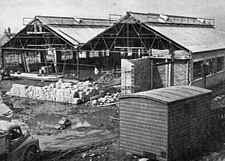 |
|
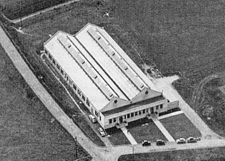 |
|
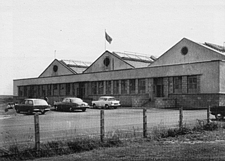 |
|
| Factory Construction, 1955 |
|
Factory Construction, 1956 |
|
Aerial View, 1956 |
|
Completion of First Extension, 1962 |
|
|
 |
|
 |
|
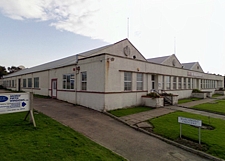 |
|
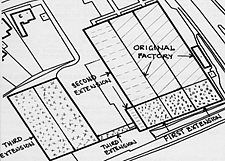 |
|
| Construction of Third Extension, 1975 |
|
Aerial View, 1977 |
|
Factory Building, 2008 |
|
Plan of Extensions |
|
Examples of Buckie Lamps
|
 |
|
 |
|
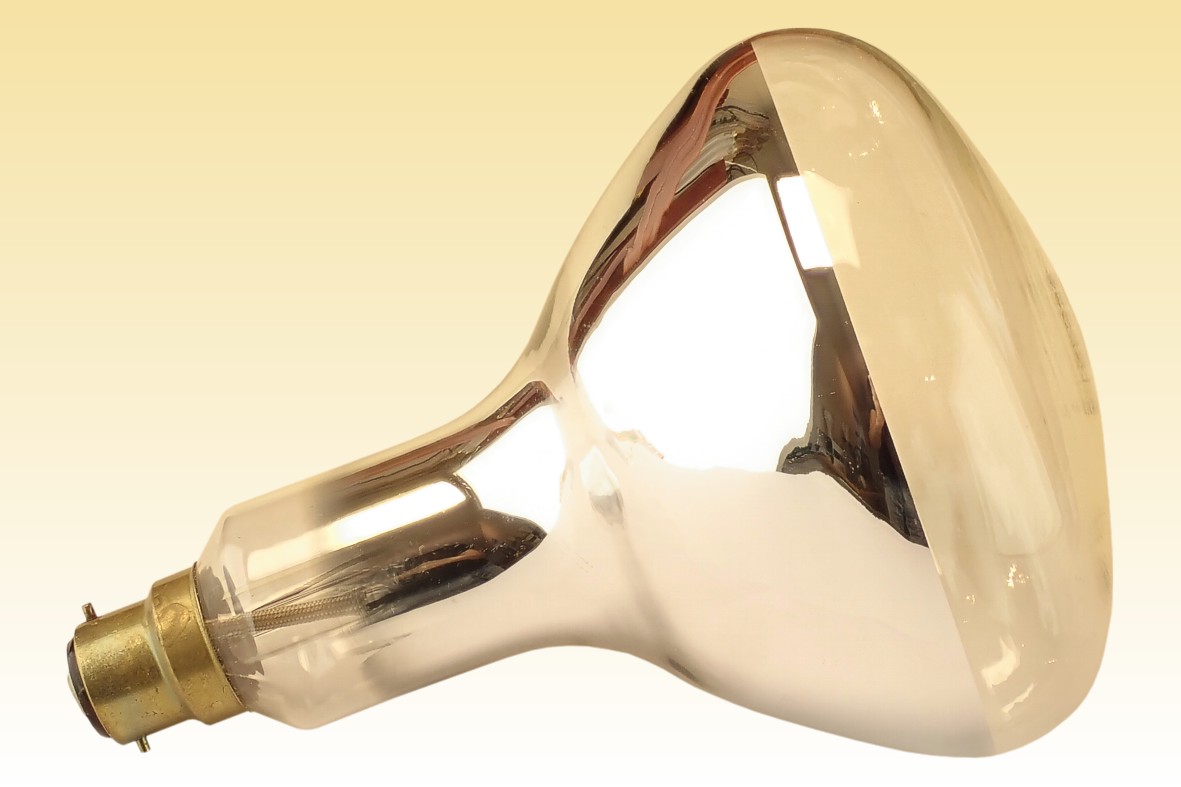 |
|
|
|
|
|
|
| Lighthouse L/25 |
|
Lighthouse EC111A |
|
Infrared Reflector |
|
|
|
|
|
|
| 1 |
The Bulb Factory, John Crawford & Ron Stewart, Published by The Buckie & District Fishing & Heritage Centre Ltd., Sept. 2008, ISBN 978-0-9556241-2-4. |
|
|
|
|
|